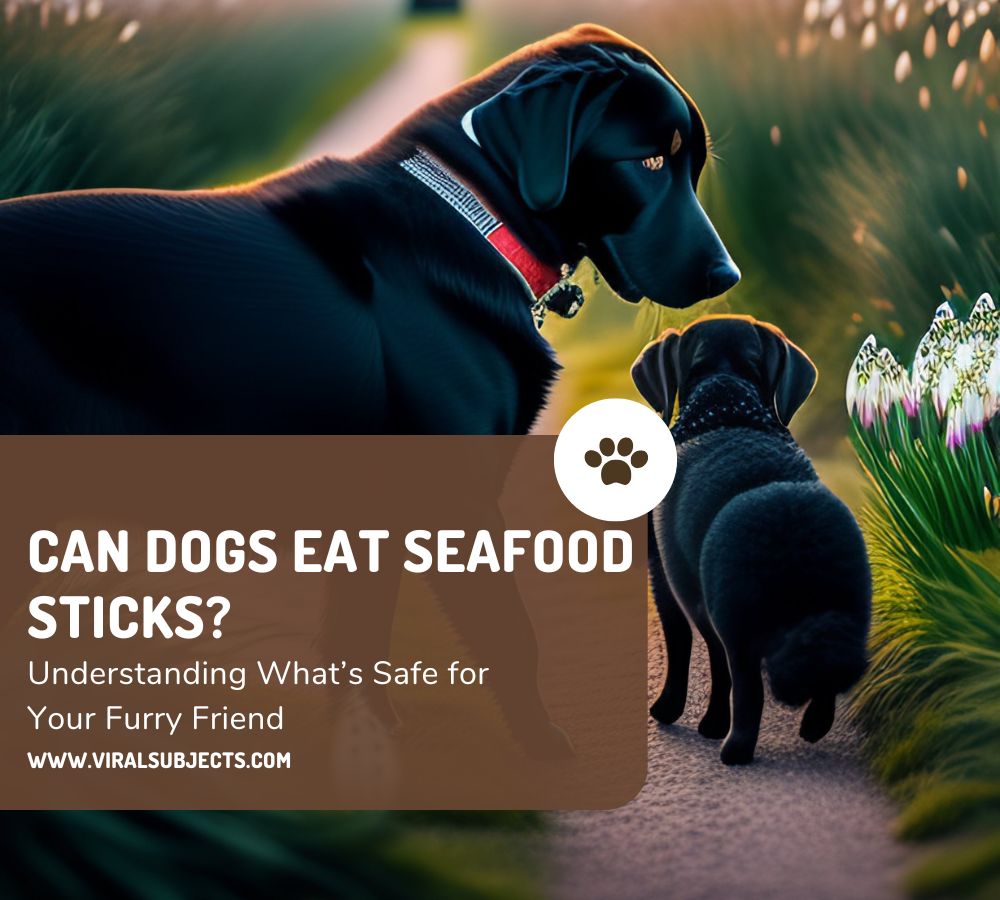Can Dogs Eat Seafood Sticks
You’re sitting on the couch, enjoying a plate of seafood sticks, when you catch sight of your dog’s eager eyes, tail wagging in hopeful anticipation. You hesitate Can Dogs Eat Seafood Sticks? This moment of curiosity is one many pet owners encounter. Let’s dive deep into whether you can share this snack with your furry friend and what to keep in mind when considering their health and happiness.
What Are Seafood Sticks?
Seafood sticks, sometimes called imitation crab or surimi, are a processed food made to mimic the taste and texture of crab meat. Despite their popularity in human diets, understanding their ingredients is key to determining if they’re appropriate for dogs.
| Ingredient | Purpose | Risk for Dogs |
|---|---|---|
| White Fish (Pollock) | Main protein source | Low risk, but less nutritious than fresh fish |
| Starch | Acts as a binder | Minimal risk unless in excess |
| Artificial Flavors | Mimics crab taste | Potential allergens for some dogs |
| Sodium | Preservative and flavor | Can lead to dehydration or salt toxicity |
Can Dogs Eat Seafood Sticks?
The short answer is yes, but with significant caution. Seafood sticks are not toxic to dogs, but they’re far from being an ideal treat. Let’s break this down further:
Potential Benefits
- Protein Content: The white fish base provides some protein, which is a vital nutrient for dogs.
- Low-Calorie Option: In small amounts, seafood sticks can serve as a low-calorie treat.
Risks to Consider
- Additives and Preservatives: Seafood sticks often contain artificial flavors and preservatives, which can irritate a dog’s digestive system or trigger allergic reactions.
- High Sodium Levels: Excess sodium can cause dehydration or, in extreme cases, salt poisoning in dogs.
- Low Nutritional Value: Seafood sticks lack the essential vitamins and minerals that dogs need for a balanced diet.

Feeding Seafood Sticks Safely
If you’re determined to share a seafood stick with your dog, follow these guidelines to minimize risks:
Dos and Don’ts
- Do:
- Serve in very small portions.
- Check ingredient labels for harmful additives like onion or garlic powder.
- Monitor your dog after feeding for any signs of discomfort or allergic reactions.
- Don’t:
- Make seafood sticks a regular part of their diet.
- Give them to puppies or dogs with existing health issues without consulting your vet.
- Serve them seasoned or with dipping sauces like soy sauce, which contains high levels of sodium.
Alternative Ways to Treat Your Dog
If you want to provide a seafood-inspired snack, try making your own version using natural, dog-safe ingredients:
| Ingredient | Quantity | Instructions |
|---|---|---|
| Fresh White Fish | 1 fillet (100g) | Bake or steam until fully cooked. |
| Mashed Sweet Potato | 2 tbsp | Mix with the cooked fish to form a paste. |
| Unsalted Rice Flour | 1 tbsp | Add as a binder to shape into sticks. |
This homemade alternative avoids preservatives and ensures your dog enjoys a safe, tasty treat.
Other Seafood Options for Dogs
Seafood sticks aren’t the only seafood you might consider sharing with your dog. Here’s a quick guide:
Safe Seafood Options
- Salmon: A rich source of omega-3 fatty acids (always cook it thoroughly).
- Sardines: High in healthy fats and protein (opt for unsalted, in water).
- Shrimp: An excellent occasional snack, but only if peeled and boiled without seasoning.
Seafood to Avoid
- Raw Fish: Contains parasites that can harm your dog.
- Shellfish: Often high in cholesterol and can cause allergic reactions.
- Canned Fish in Oil or Salted Brine: Excess sodium and unhealthy fats can lead to digestive upset or long-term health issues.

Signs Your Dog May Have an Allergic Reaction
Whenever introducing a new food, including seafood sticks, watch for the following symptoms:
- Itching or excessive scratching
- Vomiting or diarrhea
- Swelling around the mouth or paws
- Lethargy or changes in behavior
If you notice any of these signs, stop feeding the seafood sticks immediately and consult your vet.
FAQs About Dogs and Seafood Sticks
Q: Are seafood sticks toxic to dogs?
No, seafood sticks are not inherently toxic, but their high sodium and artificial additives can pose risks.
Q: Can puppies eat seafood sticks?
Puppies should avoid processed foods entirely, as their developing digestive systems are more sensitive.
Q: What should I do if my dog eats too many seafood sticks?
Monitor your dog closely for symptoms like vomiting, diarrhea, or dehydration. If these occur, contact your veterinarian.
Q: What are some healthy alternatives to seafood sticks?
Try plain-cooked fish like salmon or cod, or invest in dog-specific seafood treats that are free from harmful additives.
Seafood sticks might seem like a harmless treat, but they’re far from a nutritional powerhouse for your dog. While it’s safe to share a small piece on occasion, the additives, high sodium content, and lack of essential nutrients make them unsuitable for regular consumption.
Your dog deserves the best when it comes to treats. Opt for natural seafood options or homemade alternatives that prioritize their health and happiness. Always consult your veterinarian before introducing new foods into their diet, ensuring their tail keeps wagging for years to come.
